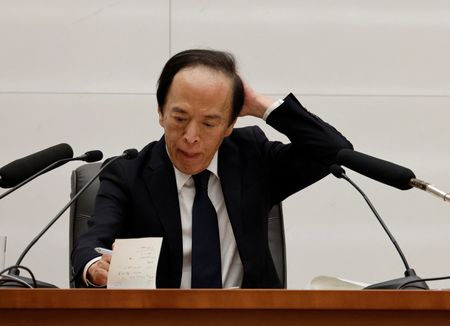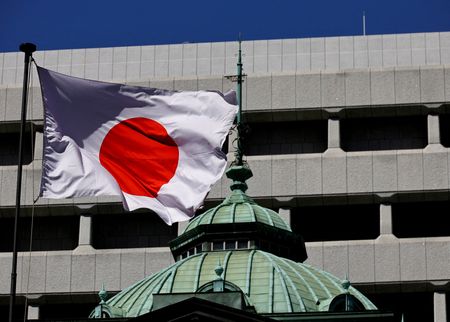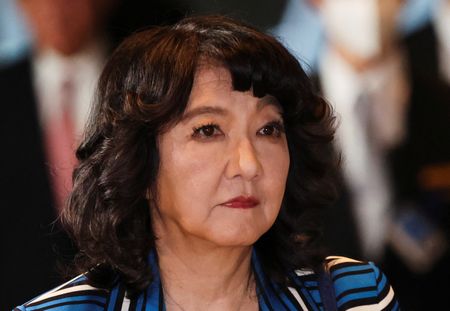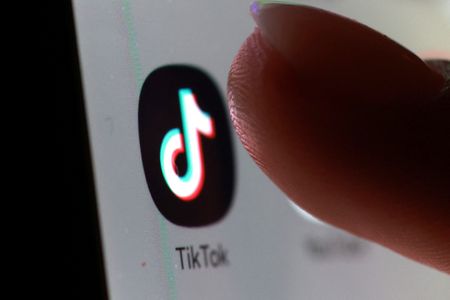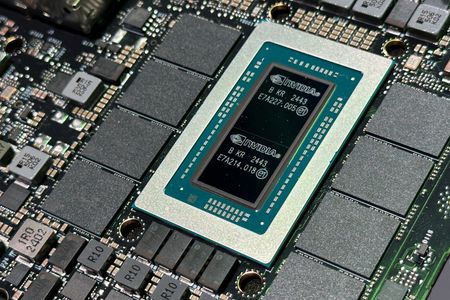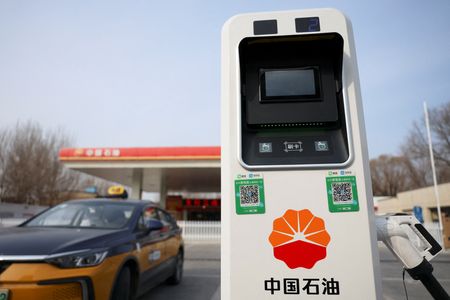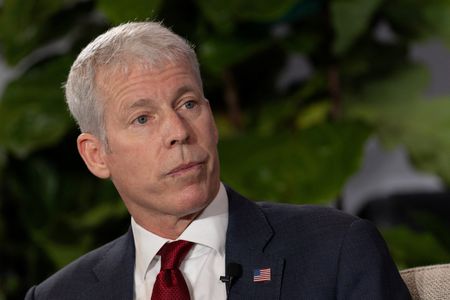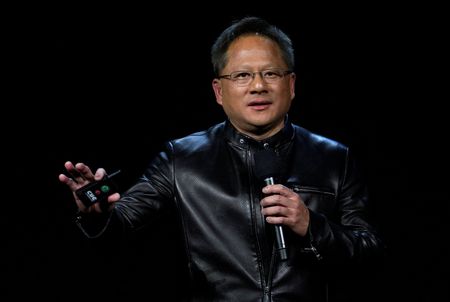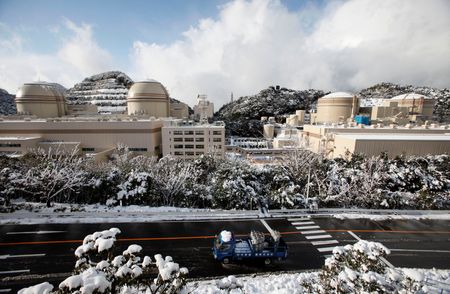By Leika Kihara and Makiko Yamazaki
TOKYO (Reuters) -The Bank of Japan kept interest rates steady on Thursday, with its governor sending the strongest signal yet that a rate hike was possible as soon as December depending on the outlook for wages next year.
The yen, however, slumped on selling by investors who had expected an even more hawkish tone from Governor Kazuo Ueda, after U.S. Treasury Secretary Scott Bessent’s recent remarks urging the central bank to move more quickly on rate hikes.
As widely expected, the central bank kept its short-term policy rate steady at 0.5%. The decision was split, with board members Naoki Tamura and Hajime Takata dissenting and reiterating their proposals made in September to raise rates to 0.75%.
In a sign of growing conviction that conditions for a rate hike were falling into place, Ueda said the likelihood of the BOJ’s baseline projection materialising has “heightened somewhat.”
The BOJ wanted to await “a bit more data” to confirm whether companies will keep raising wages despite pressure from higher U.S. tariffs, he added.
“I’m not saying that we need to wait until the final outcome of next year’s wage talks becomes available. We want to gather a bit more data on the initial momentum of the talks,” Ueda said, when asked whether enough data will become available to raise rates at the next policy meeting in December.
Despite Ueda’s hawkish comments, the yen slid to its lowest since mid-February at 153.56 per dollar. It also fell to an all-time low against the euro at 178.39.
Market participants may have focused on Ueda’s remarks dismissing concerns that the central bank was behind the curve in tackling inflation risks, analysts said.
Still, analysts anticipate a rate hike in the coming months.
“The BOJ is tip-toeing towards a hike. With inflation remaining elevated, economic performance on a decent track, and fiscal tailwinds gathering speed, it remains a question of when, not if, the BOJ will hike,” said Fred Neumann, chief Asia economist at HSBC in Hong Kong.
“While markets have pushed back expectations for monetary tightening by Japan’s central bank, officials may hike policy rates sooner rather than later.”
ON TRACK, FOR NOW
Japan’s economy has so far weathered the hit from higher U.S. tariffs with corporate profits, business sentiment and capital expenditure plans holding up.
Stubbornly high food prices have kept inflation above the BOJ’s 2% target for well over three years, drawing policymakers’ attention to broadening inflationary pressure.
The board has thus been split between hawks who see conditions ripe to raise rates and doves like Ueda who prefer awaiting more data on the extent of damage from slowing U.S. growth and President Donald Trump’s tariffs.
Uncertainty over the impact of tariffs also overshadowed discussions at the U.S. Federal Reserve, which delivered another interest rate cut on Wednesday but by a split vote.
In a quarterly outlook report released on Thursday, the BOJ slightly revised up its economic growth forecast for the current fiscal year ending in March 2026. It left unchanged its view that risks to the price outlook were roughly balanced.
The BOJ also said it expects underlying inflation to hit 2% in the latter half of the three-year projection period through fiscal 2027, retaining language in the previous report in July.
NEW POLITICAL CHALLENGES FOR BOJ
Aside from looming overseas risks, politics have complicated the BOJ’s decision. Markets had reduced bets on an October rate hike after last week’s inauguration of new Prime Minister Sanae Takaichi, who is known as an advocate of loose monetary policy.
Still, a majority of economists polled by Reuters expect the BOJ to raise rates either in October or December. Nearly all project a hike to 0.75% happening by end-March.
Ueda said political considerations will not get in the way of necessary rate hikes, stressing that the BOJ will raise borrowing costs once the board is convinced that companies will sustain the trend of setting higher wages.
He also dismissed suggestions that the BOJ might avoid a rate hike in December – around the time the government drafts next year’s state budget.
“Our main focus is on scrutinising the initial momentum of next year’s wage talks,” Ueda said.
The BOJ last year exited a decade-long, massive stimulus programme and raised rates to 0.5% in January on the view Japan was close to durably hitting its 2% inflation target. It has kept interest rates steady since then.
Critics say the slow pace of the BOJ’s rate hikes has contributed to yen weakness, raising import costs and fuelling broader inflation.
(Reporting by Leika Kihara and Makiko Yamazaki; additional reporting by Satoshi Sugiyama and Kantaro Komiya; Editing by Sam Holmes and Jacqueline Wong)

